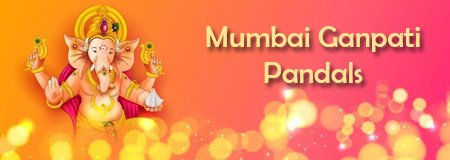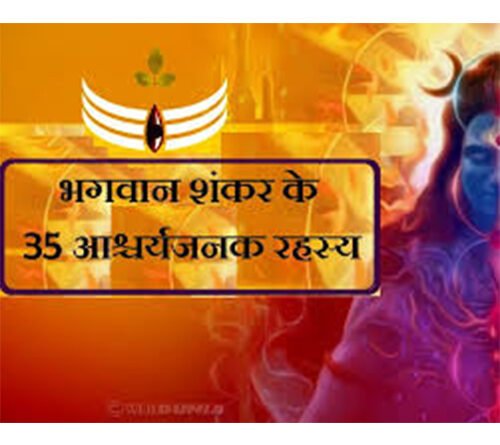“35” secrets of Lord Shiva
Lord Shiva i.e. Parvati’s husband Shankar who is called Mahadev, Bholenath, Adinath etc.
1. Adinathshiv
👉First of all, Shiva made an effort to propagate life on earth, hence he is also called ‘Adidev’. ‘Adi’ means beginning. Being Adinath, his name is also ‘Aadish’.
2. Shiva’s weapons: Shiva’s bow is Pinaka, Chakra is Bhavarendu and Sudarshan, weapon is Pashupatastra and weapon is Trishul. He had created all the above.
3. Lord Shiva’s snake 👉 The snake which is wrapped around the neck of Shiva is named Vasuki. Vasuki’s elder brother’s name is Sheshnag.
4. Shiva’s better half 👉 Shiva’s first wife Sati was born as Parvati in the next life and she is called Uma, Urmi, Kali.
5.Son of Shiva 👉 Shiva has 6 main sons – Ganesha, Kartikeya, Sukesh, Jalandhar, Ayyappa and Bhuma. Everyone’s birth story is interesting.
6. Shiva’s disciple
👉 Shiva has 7 disciples who are considered to be the initial Saptarishis. It was these sages who spread the knowledge of Shiva all over the earth, due to which different religions and cultures came into existence. It was Shiva who started the Guru and disciple tradition. Shiva’s disciples are – Brihaspati, Vishalaksh, Shukra, Sahasraksh, Mahendra, Prachetas Manu, Bharadwaj, apart from this there was also the 8th Gaurashiras Muni.
7. Ganas of Shiva 👉 Among the Ganas of Shiva, Bhairav, Veerbhadra, Manibhadra, Chandis, Nandi, Shringi, Bhrigiriti, Shail, Gokarna, Ghantakarna, Jai and Vijay are prominent. Apart from this, vampires, demons, snakes and animals are also considered to be part of Shiva.
8. Shiv Panchayat
👉 Lord Surya, Ganapati, Devi, Rudra and Vishnu are called Shiv Panchayat.
9. Shiva’s gatekeeper
👉Nandi, Skanda, Riti, Vrishabha, Bhrungi, Ganesha, Uma-Maheshwar and Mahakal.
10. Shiv Parshad
👉Just as Jai and Vijay are the advisors of Vishnu, similarly Baan, Ravana, Chand, Nandi, Bhrungi etc. are the advisors of Shiva.
11. Shiva, the center of all religions 👉 Shiva’s attire is such that people of every religion can find their symbols in it. The imprint of Shiva’s presence can be clearly seen in Mushrik, Yazidi, Sabine, Subi and Abrahamic religions. A tradition started with the disciples of Shiva, which later got divided into Shaiva, Siddha, Nath, Digambara and Sufi sects.
12. Professor Upasak, an internationally renowned scholar of Buddhist literature, believes that Shankar himself was born as Buddha. Referring to the 27 Buddhas mentioned in the Pali scriptures, he said that among them, three names of Buddha are very ancient – Tanankar, Shanankar and Meghankar.
13. Shiva is beloved by both gods and demons 👉 Along with the gods, Lord Shiva is worshiped by all asuras, demons, rakshasas, vampires, Gandharvas, Yakshas etc. He gives boon to Ravana and also to Ram. He had given boon to many demons like Bhasmasur, Shukracharya etc. Shiva is the supreme deity of all tribal, forest dweller caste, varna, religion and society.
14. Shiva Symbol 👉 The symbol which can be worshiped by everyone from forest dwellers to common people, that stone lump or pot is considered to be the symbol of Shiva. Apart from this, Rudraksha and Trishul are also considered symbols of Shiva. Some people also consider Damru and the crescent moon as symbols of Shiva, although most people worship Shivalinga i.e. the light of Shiva.
15. Shiva’s Cave 👉 Shiva made a cave with his trident in a hill to escape from Bhasmasura and he again hid in the same cave. That cave is on the Trikuta hills, 150 kilometers from Jammu. On the other hand, the cave where Lord Shiva gave the nectar of knowledge to Parvati is famous by the name of ‘Amarnath Cave’.
16. Footprints of Shiva 👉 Shripad- There are footprints of Shiva in a temple named Shripad located on the top of Ratan Island mountain in Sri Lanka. These footprints are 5 feet 7 inches long and 2 feet 6 inches wide. This place is called Sivanolipadam. Some people call it Adam’s Peak.
Rudra Padam – The temple of Sriswedaraneyeswarar in Thiruvengadu area of Nagapattinam district of Tamil Nadu has the footprints of Shiva which is called ‘Rudra Padam’. Apart from this, there are footprints of Shiva at a place in Thiruvannamalai also.
Tezpur- There is a mark of Shiva’s right foot in the Rudrapada temple located near the Brahmaputra river in Tezpur, Assam.
Jageshwar- 36 kilometers away from Almora, Uttarakhand, there are footprints of Shiva near the temple of Bhima in the forest, about 4 and a half kilometers away from the hill of Jageshwar temple. To avoid giving darshan to the Pandavas, he placed one foot here and the other in Kailash.
Ranchi- There are footprints of Lord Shiva on ‘Ranchi Hill’, 7 kilometers from Ranchi Railway Station in Jharkhand. This place is called ‘Pahari Baba Temple’.
17. Avatars of Shiva 👉 Veerbhadra, Pippalada, Nandi, Bhairav, Mahesh, Ashwatthama, Sharbhavatara, Grihapati, Durvasa, Hanuman, Vrishabha, Yatinath, Krishnadarshan, Avadhoot, Bhikshuvarya, Sureshwar, Kirat, Suntanartak, Brahmachari, Yaksha, Vaishyanath, Dwijeshwar, There are Hansroop, Dwij, Nateshwar etc. Rudras are mentioned in the Vedas. Rudras are said to be 11 – Kapali, Pingal, Bhima, Virupaksha, Vilohit, Shasta, Ajapad, Apirbudhya, Shambhu, Chand and Bhava.
18. Paradoxical Family of Shiva 👉 Shiva’s son Kartikeya’s vehicle is a peacock, while Shiva has the serpent Vasuki around his neck. Peacock and snake are enemies by nature. Here Ganapati’s vehicle is a rat, while the snake is a rodent. Parvati’s vehicle is a lion, but Shiva’s vehicle is Nandi the bull. Despite this contradiction or ideological difference, there is unity in the family.
19.👉 His residence is on Mount Kailash located in Tibet. Just below the mountain where Shiva sits, is the underworld which is the place of Lord Vishnu. Above the seat of Shiva, beyond the atmosphere, there is heaven and then the place of Brahmaji respectively.
20. Shiva devotees 👉 Lord Ram and Krishna along with Brahma, Vishnu and all the gods and goddesses are also devotees of Shiva. According to Harivansh Purana, Krishna performed penance on Mount Kailash to please Shiva. Lord Rama had installed and worshiped Shivalinga in Rameshwaram.
21. Shiva Meditation 👉 Shiva is meditated and worshiped for the devotion of Shiva. By offering Bilva leaves to Shivalinga and chanting mantras or meditating near Shivalinga, the path to salvation is confirmed.
22.Shiva Mantra
👉There are only two mantras of Shiva, first – Om Namah Shivay. Second Mahamrityunjaya Mantra – Om Hraun Ju Sah. Om Bhu Bhuvah Swah. Om Trimbakam Yajamahe Sugandhi Pushtivardhanam. Urvarukamiv Bandhananmrityormukshiya Maamrityat. Swah Bhuvah Bhooh Om. Sah Ju Hraun Om ॥ Is.
23.Shiva Vrat and Festivals 👉 Shiva Vrat is observed on Monday, Pradosh and Shravan month. Shivratri and Mahashivratri are the main festivals of Shiva.
24. Shiv Pracharak 👉 The tradition of Lord Shankar was carried forward by his disciples Brihaspati, Vishalaksh (Shiva), Shukra, Sahasraksh, Mahendra, Prachetas Manu, Bhardwaj, Agastya Muni, Gaurashiras Muni, Nandi, Kartikeya, Bhairavnath etc. Apart from this, Veerbhadra, Manibhadra, Chandis, Nandi, Shringi, Bhrigiriti, Shail, Gokarna, Ghantakarna, Baan, Ravana, Jai and Vijay also propagated Shaivism.The biggest name in this tradition comes from Adiguru Lord Dattatreya. After Dattatreya, the names of Adi Shankaracharya, Matsyendranath and Guru Guru Gorakhnath are taken prominently.
25. Shiva Glory 👉 Shiva drank poison called Kalakoot which came out during the churning of nectar. Shiva had given boon to many demons like Bhasmasur. Shiva had burnt Kamadeva to ashes. Shiva had joined the heads of Ganesha and King Daksha. Shiva had cut off the fifth head of Brahma when he was tricked by Brahma.
26. Shaiva tradition 👉 Dasnami, Shakta, Siddha, Digambara, Nath, Lingayat, Tamil Shaiva, Kalmukh Shaiva, Kashmiri Shaiva, Veerashaiva, Naga, Lakulish, Pashupat, Kapalika, Kaldaman and Maheshwar all belong to the Shaiva tradition. Chandravanshi, Suryavanshi, Agnivanshi and Nagvanshi are also considered to be from the tradition of Shiva. Shiva is the worshipable god of the Asuras, Rakshasas and tribal castes of India. Shaivism is the religion of the tribal people of India.
27. Major names of Shiva 👉 Although Shiva has many names in which 108 names are mentioned in the Puranas, but know the popular names here – Mahesh, Neelkanth, Mahadev, Mahakal, Shankar, Pashupatinath, Gangadhar, Nataraj, Trinetra, Bholenath, Adidev. , Adinath, Triyambak, Trilokesh, Jatashankar, Jagadish, Pralayankar, Vishwanath, Vishweshwar, Har, Shivshambhu, Bhoothnath and Rudra.
28. Amrit Vachan of Amarnath 👉 The knowledge which Shiva gave to his better half Parvati in the cave of Amarnath for salvation, today has many branches. He is included in the basic sutras of Jnana Yoga and Tantra. ‘Vigyan Bhairav Tantra’ is a book which contains a compilation of 112 meditation sutras told by Lord Shiva to Parvati.
29. Shiva scriptures 👉 The complete education and initiation of Shiva is contained in Vedas and Upanishads including Vigyan Bhairav Tantra, Shiva Purana and Shiva Samhita. His teachings have been expanded upon in many texts of Tantra.
30. Shivling 👉 According to Vayu Purana, the one in which the entire creation gets absorbed in the time of destruction and which appears again in the time of creation, is called Linga. In this way the entire energy of the world is a symbol of gender. In fact, this entire creation is in the form of a point-sound. Bindu is Shakti and sound is Shiva. Bindu means energy and Naad means sound. These two are the basis of the entire universe. For this reason, Shivalinga is worshiped as a symbol.
31. Twelve Jyotirlingas 👉 Somnath, Mallikarjun, Mahakaleshwar, Omkareshwar, Vaidyanath, Bhimshankar, Rameshwar, Nageshwar, Vishwanathji, Trimbakeshwar, Kedarnath, Ghrishneshwar. There are many popular beliefs regarding the origin of Jyotirlinga. Jyotirlinga means ‘widespread Brahmatmalinga’ which means ‘widespread light’. Which are the twelve sections of Shivalinga. According to Shivpuran, Brahma, Maya, Jiva, mind, intellect, chitta, ego, sky, air, fire, water and earth have been called Jyotirlinga or Jyoti Pinda.
According to the second belief, according to Shiva Purana, in ancient times, light bodies fell on the earth from the sky and spread light for some time. Many such meteorites had fallen from the sky to the earth. Of the many objects that fell in India, only the top twelve were included in the Jyotirlinga.
32. Philosophy of Shiva 👉 Those who look at the life and philosophy of Shiva realistically are the devotees of Shiva with right intelligence and who grasp the reality, because the philosophy of Shiva says that live in reality, live in the present, fight your mental tendencies. Don’t look at them as strangers and use your imagination for reality. Before Einstein, Shiva himself had said that imagination is more important than knowledge.
33. Shiva and Shankar 👉 Shiva’s name is combined with Shankar. People say- Shiv, Shankar, Bholenath. In this way, many people unknowingly call Shiva and Shankar as two names of the same entity. Actually, both the statues are of different shapes. Shankar is always shown in an ascetic form. At many places Shankar has been shown meditating on Shivalinga. Hence Shiva and Shankar are two different entities. However, Shankar is also considered to be the form of Shiva. Mahesh (Nandi) and Mahakal are believed to be the gatekeepers of Lord Shankar. Rudra is a member of Devta Shankar’s panchayat.
34. Mahadev, the God of Gods: There was a competition between the gods and the demons. In such a situation, whenever the gods were in dire straits, they all went to Devadhidev Mahadev. The gods including demons and demons challenged Shiva many times, but they all were defeated and bowed down before Shiva, that is why Shiva is Mahadev, the God of Gods. He is also the favorite Lord of demons, devils and ghosts. He gives boon to Ram and also to Ravana.
35. Shiva in every era: 👉 Lord Shiva has appeared to people in every era. Shiva was there even at the time of Ram. Shiva was there even during the Mahabharata period and there is mention of the presence of Shiva during the period of Vikramaditya also. According to Bhavishya Purana, Lord Shiva had also appeared to King Harshvardhan.










